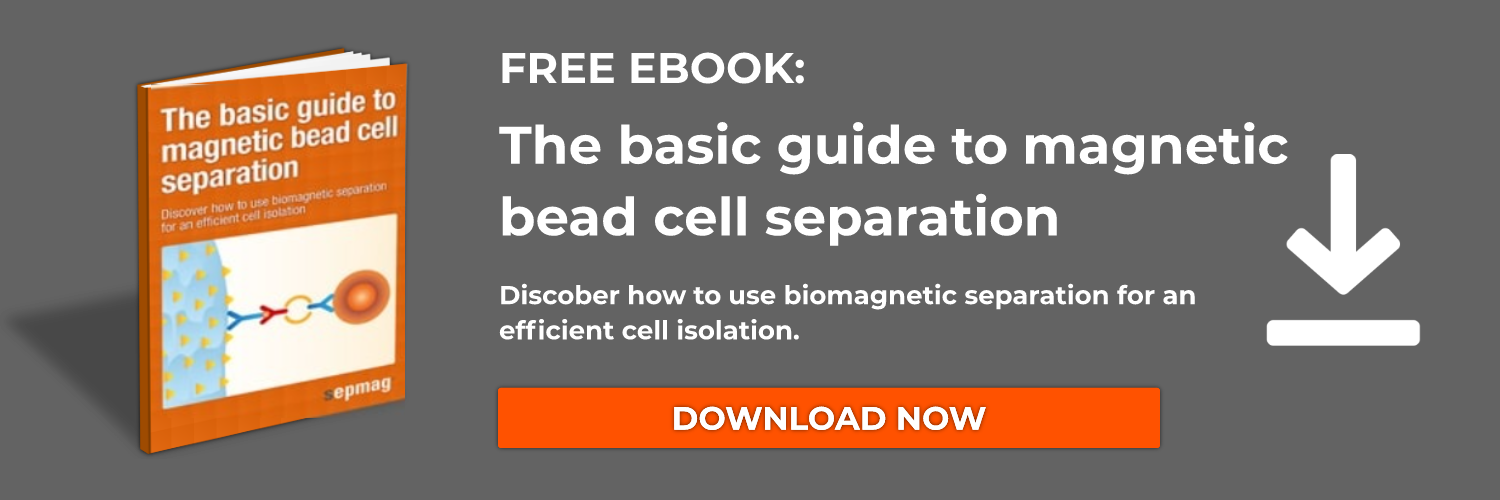Immunoprecipitation (IP) is a technique for capturing specific proteins from a complex solution via antibody-antigen affinity. In IP the goal is to target and isolate a specific protein, whereas in co-IP the goal is to identify protein complexes and other macromolecules bound to the target in the sample solution. The targeted protein complexes can later undergo analysis to identify specific binding partners, determine binding affinities, or study the kinetic relationship between binding and the function of the target protein. Recently, magnetic nanoparticle technologies have greatly advanced co-IP experiments. Magnetic co-IP protocols offer simple, ultra-fast workflows, versatility, and help generate highly concentrated complexes. After performing a magnetic co-IP protocol, the protein capture efficiency can be measured by IP input, which is essentially the total protein lysate and what is eluted from the magnetic beads after. The IP is often tested through SDS-PAGE and Western blot analysis.
Magnetic co-IP Protocols
Magnetic co-IP protocols accomplish two main goals. Firstly, they bind the target protein or protein complex, to an antibody embedded in a solid support. Second, they effectively isolate the formed antibody-protein complex from the solution. In traditional methods, these solid supports are made of agarose-based porous resins that have been incorporated into single-use centrifuge tubes. Following an incubation step under favorable binding conditions, the contaminating solution and unbound proteins are washed away before target proteins are eluted. This method requires a centrifuge and a technician to perform multiple wash steps.
In modern technologies, however, superparamagnetic nanoparticles have become the premier choice for the solid support system in IP and co-IP protocols. In solution magnetic nanoparticles become colloid, and offer free flowing, high surface area, recoverable characteristics. The movement of superparamagnetic nanoparticles in solution is controlled by an external magnetic field gradient. The magnetic nanoparticles can be functionalized by the attachment of protein A/G or specific antibodies to bind target proteins in solution. Magnetic co-IP protocols eliminate the need for a centrifuge and multiple handling steps, improve the speed of the process, and introduce the possibility of automation in experimentation.
Analyzing IP Input Using SDS-PAGE and Western Blot
After a magnetic co-IP protocol is performed, IP input is generally tested to ensure the IP or co-IP procedure indeed captured the target protein. This is often done through SDS-PAGE, a method that uses gel electrophoresis to spatially separate denatured proteins by molecular weight. The gel should have at least two columns: a control that includes the cell isolate prior to immunoprecipitation, and the IP input that includes a cell isolate that has undergone immunoprecipitation. Once the control and IP input samples are loaded, an electric field gradient forces the proteins within the samples to move and become deposited at different points in the gel based on size to form bands or latter-like patterns. Larger proteins travel at slower speeds and will deposit at positions more upstream than smaller proteins. Upon analysis, the control lane will have many bands representing different proteins within the isolate, whereas the IP input lane should ideally have a single band representing the target protein.
Next, the proteins undergo Western blot analysis where first, a primary antibody to the target protein is applied to a film, followed by a dye-conjugated secondary antibody. Next, all unbound antibodies are washed away, leaving only the bound antibody to the protein of interest. If the antibodies only bind to the IP input, only one band should be visible after processing the film. The thickness of the IP input band also corresponds to the amount of target protein present. A corresponding band will also be visible on the whole isolate input lane, but not in the isotype control.
Benefits of Magnetic IP and co-IP
The purpose of an IP or co-IP experiment might be for understanding the structure of a protein, its expression, or determining its binding partners. Regardless, there are several advantages to using magnetic IP and co-IP protocols that are adaptable to your experimental needs. Notably, magnetic techniques allow for a variety of sample volumes to be analyzed, from milliliters to liters. No matter what size you use, the constant magnetic force will keep the separation process steady, fast, and efficient. Optimization of magnetic separation steps is also highly achievable, allowing you to obtain a highly concentrated, increased target protein yield. Magnetic techniques also have fewer handling steps, increasing the speed of experimentation and limiting the potential for contamination. Additionally, the incredible size uniformity of magnetic beads provides higher reproducibility in experimentation and purity compared to traditional techniques.
Published on June 17, 2021 and updated on February 06, 2024.
Related news





